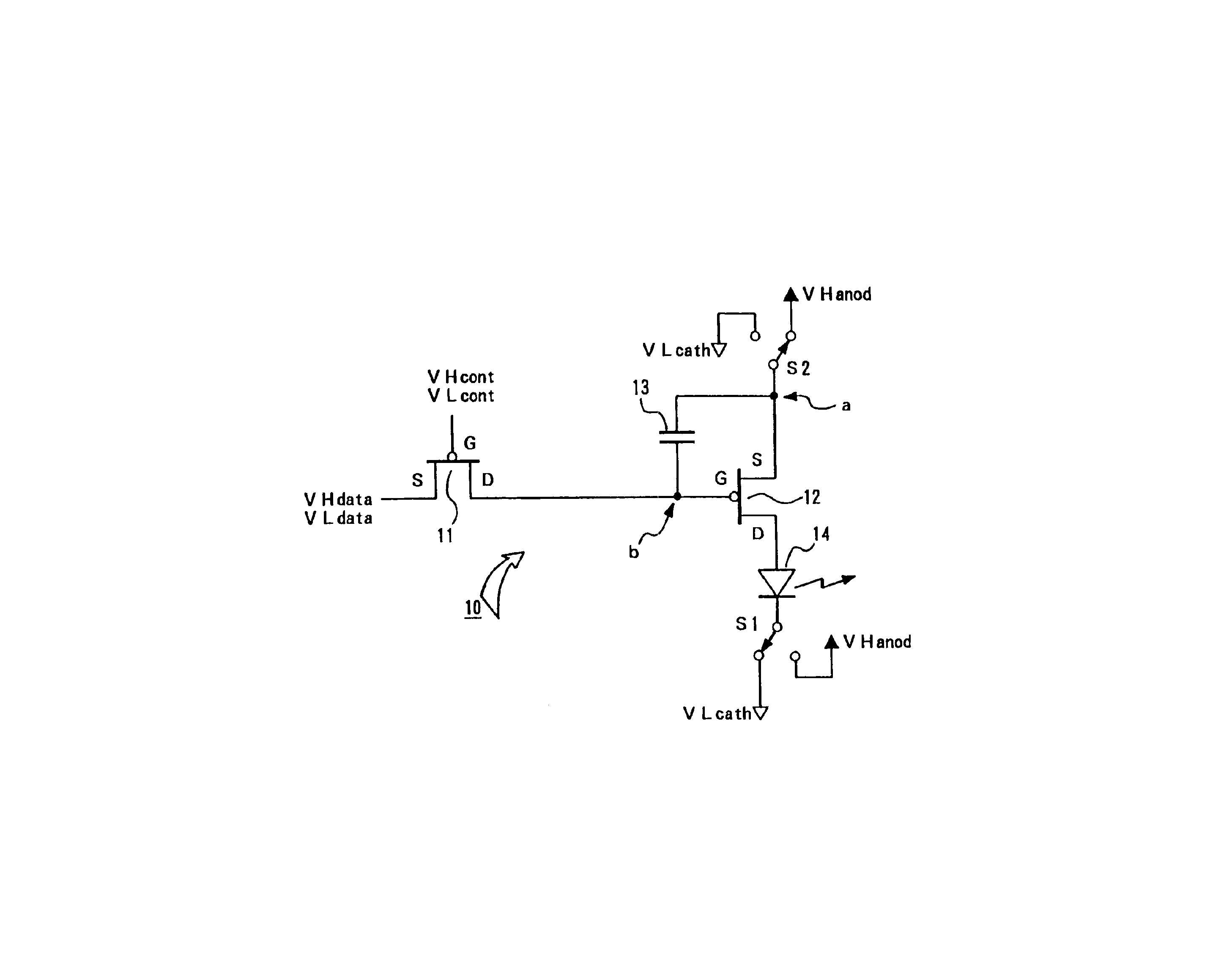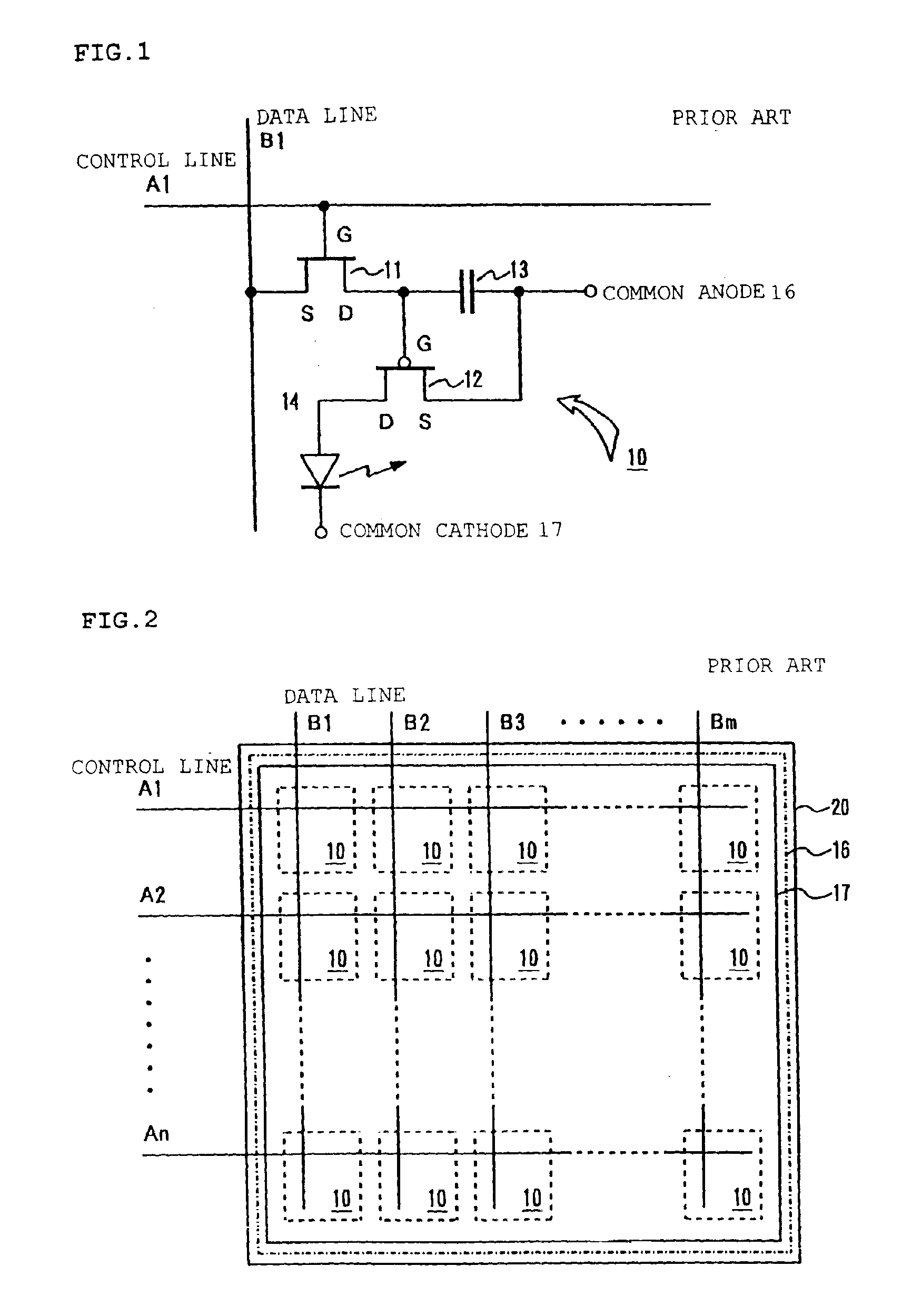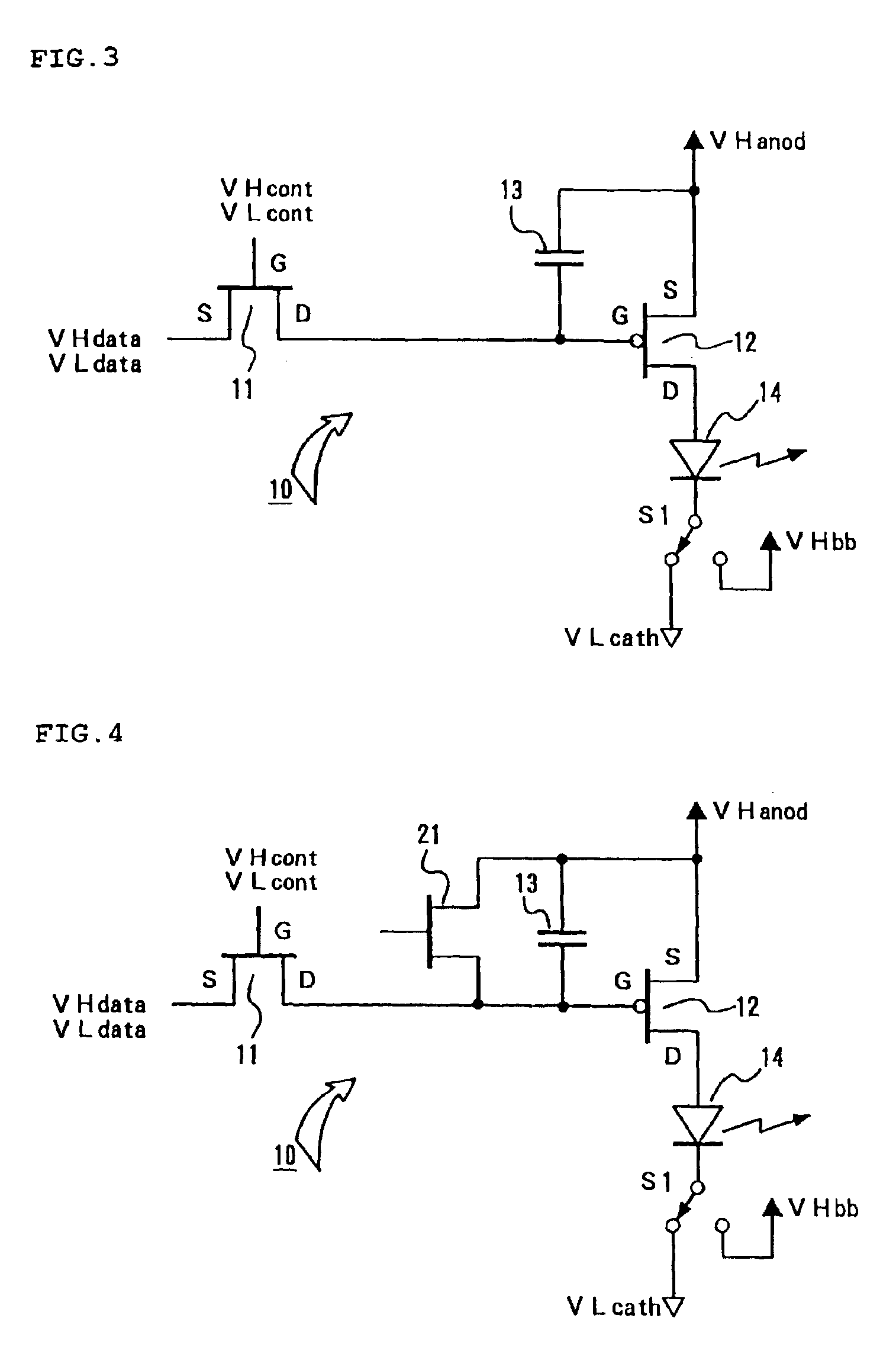Device for driving luminescent display panel
a display panel and luminescent technology, applied in the direction of static indicating devices, identification means, instruments, etc., can solve the problems of reducing the service life of the el element, and becoming difficult to effectively apply the reverse bias voltage to the el element b
- Summary
- Abstract
- Description
- Claims
- Application Information
AI Technical Summary
Benefits of technology
Problems solved by technology
Method used
Image
Examples
second embodiment
Next, FIG. 9 illustrates by a circuit construction corresponding to one pixel 10 of the present invention. In the construction, as well, illustrated in FIG. 9, as in the case of the construction illustrated in FIG. 6 which was already explained, there is also utilized the drive means, based on the use of the 3-TFT method, which realizes digital-gradation driving. Comparing it with the construction illustrated in FIG. 6, a P channel type is used as the control TFT 11. Namely, in this embodiment as well, as the drive TFT 12 and control TFT 11, a P-channel type TFT is used for each of them. Further, for an erasing TFT 21 for performing gradation expression, also, a P channel type TFT is used.
According to this construction, the operational relationship between the drive TFT 12 and the control TFT 11 is the same as in the case of the construction illustrated in FIG. 8. Namely, to the EL element 14 there can be effectively applied via the drive TFT 12 a reverse bias voltage in this state ...
third embodiment
FIG. 10 illustrates by a circuit construction corresponding to one pixel 10 of the present invention. The construction illustrated in FIG. 10 is formed into a type wherein, in addition to the construction illustrated in FIG. 9, there is equipped a diode 18 that is connected in parallel to the drive TFT 12 and, when applied with a reverse bias voltage, becomes electrically conductive. In this construction as well, when applying a reverse bias voltage to the EL element 14, the changeover switches S1 and S2 are each changed over to the opposite state to that illustrated. The diode 18 that has been connected in parallel to the drive TFT 12 becomes electrically conductive and this enables effectively applying a reverse bias voltage to the EL element 14.
And, in a state where the EL element 14 is applied with a reverse bias voltage, since each of the TFT 21 and TFT 11 is constructed using a P channel type transistor, it is maintained in an “off” state. Accordingly, as was explained in FIG....
fourth embodiment
FIG. 11 illustrates the present invention by a circuit construction corresponding to one pixel 10. This construction illustrated in FIG. 11 utilizes drive means for driving with the use of a so-called “current mirror” method. The construction is made so that the writing processing into the capacitor for holding electric charge as well as the light-up driving operation may be performed through the performance of the current mirror operation. In this construction illustrated in FIG. 11, also, a power source voltage of VHanod=10 V and a power source voltage of VHcath=−5 V may be utilized. Namely, in case where causing a forward-directional electric current to flow into the EL element 14 and in case where applying a reverse bias voltage to the EL element 14, it is arranged that each of the VHanod=10 V and the VLcath=−5 V be used by having its output level inverted in terms of the polarity via the changeover switch S1 or S2.
Also, a TFT 22 that is of a P-channel type is symmetrically equi...
PUM
 Login to View More
Login to View More Abstract
Description
Claims
Application Information
 Login to View More
Login to View More - R&D
- Intellectual Property
- Life Sciences
- Materials
- Tech Scout
- Unparalleled Data Quality
- Higher Quality Content
- 60% Fewer Hallucinations
Browse by: Latest US Patents, China's latest patents, Technical Efficacy Thesaurus, Application Domain, Technology Topic, Popular Technical Reports.
© 2025 PatSnap. All rights reserved.Legal|Privacy policy|Modern Slavery Act Transparency Statement|Sitemap|About US| Contact US: help@patsnap.com



